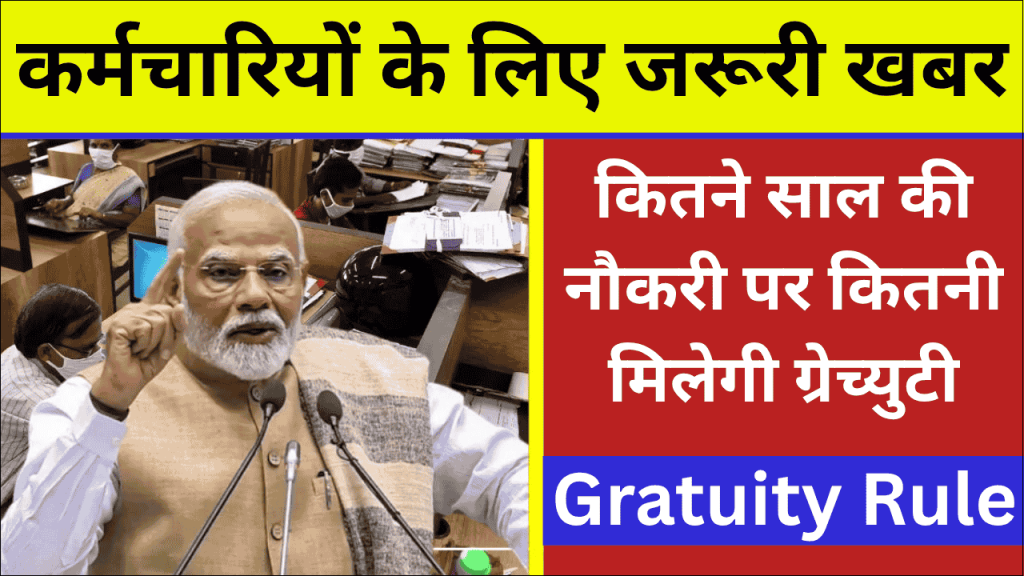
Gratuity is a statutory benefit that serves as a reward for employees who demonstrate long-term loyalty and dedication to their organization. Under Indian labor laws, it represents a legal right designed to provide financial security to workers when they leave their job, retire, or separate from the company for various reasons. This benefit system encourages employees to maintain long-term relationships with their employers while ensuring they receive adequate compensation for their years of service.
Understanding Gratuity: A Legal Framework
Gratuity operates under the Payment of Gratuity Act, 1972, which mandates that eligible employees receive this benefit as recognition for their continuous service. The primary objective of gratuity is to provide economic security to employees during their transition period, whether due to retirement, resignation, or other circumstances. This system not only benefits individual employees but also encourages organizational stability by incentivizing long-term employment relationships.
The recent announcement of the 8th Pay Commission by Prime Minister Narendra Modi’s government, effective from 2026, along with the implementation of the Unified Pension Scheme from April 1, 2025, is expected to bring significant changes to the gratuity structure. These policy modifications will directly impact how gratuity calculations are made and distributed among central government employees and pensioners.
Eligibility Criteria for Gratuity
The most crucial requirement for receiving gratuity is completing a minimum of five years of continuous service with the same employer. This five-year threshold is strictly enforced without any exceptions. Only after completing this mandatory period does an employee become eligible for gratuity benefits, regardless of whether they leave due to retirement, resignation, or other reasons.
This stringent requirement is designed to promote employee retention and foster long-term commitment between employers and workers. The five-year rule applies universally across all sectors, whether government or private, ensuring consistency in gratuity distribution.
Critical Time Calculation Rules
The calculation of service years for gratuity purposes follows very specific guidelines that employees must understand thoroughly. If an employee works for four years and eleven months, they will not be eligible for gratuity, despite being just one month short of the five-year requirement. This rule demonstrates the strict adherence to the minimum service period.
However, there is one important exception: if an employee has completed four years and eight months of service, this period is considered equivalent to five complete years for gratuity calculation purposes. Any service period less than four years and eight months is rounded down to the completed years only, which could significantly impact the final gratuity amount.
Gratuity Calculation Formula
The calculation of gratuity follows a standardized formula that considers the employee’s last drawn salary and years of service. The standard formula is:
Gratuity Amount = Last Drawn Salary × 15 ÷ 26 × Number of Years of Service
In this formula:
- 15 represents the number of working days in a month
- 26 represents the total number of days in a month
- Last Drawn Salary includes basic salary plus dearness allowance
This calculation method ensures fairness and consistency across all organizations while providing a clear framework for determining gratuity amounts.
Gratuity Payment Scenarios
Gratuity payments vary depending on the circumstances of employment termination:
Retirement: Employees receive full gratuity benefits upon reaching retirement age after completing the minimum service period.
Voluntary Resignation: Employees who resign voluntarily are entitled to gratuity if they have completed five years of service.
Death: In case of an employee’s death, gratuity is paid to their legal heirs or nominees, regardless of the service period completed.
Termination for Misconduct: Employees terminated due to disciplinary action or misconduct are not eligible for gratuity benefits.
Disability: Employees who become permanently disabled during service are eligible for gratuity payments.
Gratuity Amount Based on Years of Service
| Years of Service | Gratuity Calculation Example (Monthly Salary ₹50,000) | Approximate Gratuity Amount |
|---|---|---|
| 5 years | ₹50,000 × 15 ÷ 26 × 5 | ₹1,44,230 |
| 10 years | ₹50,000 × 15 ÷ 26 × 10 | ₹2,88,461 |
| 15 years | ₹50,000 × 15 ÷ 26 × 15 | ₹4,32,692 |
| 20 years | ₹50,000 × 15 ÷ 26 × 20 | ₹5,76,923 |
| 25 years | ₹50,000 × 15 ÷ 26 × 25 | ₹7,21,153 |
| 30 years | ₹50,000 × 15 ÷ 26 × 30 | ₹8,65,384 |
| 35 years | ₹50,000 × 15 ÷ 26 × 35 | ₹10,09,615 |
Note: Calculations are approximate and based on a monthly salary of ₹50,000. Actual amounts may vary based on salary increments and company policies.
Legal Rights and Maximum Limits
Gratuity is a legal right protected by labor laws, and employers cannot refuse payment if employees meet the eligibility criteria. The current maximum gratuity limit is set at ₹20 lakhs, which was increased from the previous limit of ₹10 lakhs. This enhancement reflects the government’s commitment to improving employee benefits and keeping pace with inflation.
Employees have the right to pursue legal action if employers wrongfully deny gratuity payments. It’s essential for workers to maintain accurate records of their service period and understand their rights thoroughly.
Tax Implications
Gratuity payments are subject to income tax if they exceed the prescribed exemption limits. For government employees, gratuity received is completely tax-free. For private sector employees, gratuity up to ₹20 lakhs or the calculated amount (whichever is lower) is exempt from tax, provided the employee has completed at least five years of service.
Any amount exceeding the exemption limit is added to the employee’s taxable income for the financial year in which gratuity is received.
Impact of 8th Pay Commission
The upcoming 8th Pay Commission, effective from 2026, is expected to bring substantial changes to gratuity calculations for central government employees. These modifications may include revised salary structures, enhanced gratuity limits, and updated calculation methodologies. The Unified Pension Scheme implemented from April 2025 will also influence how retirement benefits, including gratuity, are calculated and distributed.
Record Keeping and Documentation
Employees should maintain comprehensive records of their employment, including:
- Joining date and service certificates
- Salary statements and increment letters
- Performance appraisals and promotion orders
- Any breaks in service or leave without pay periods
These documents are crucial for accurate gratuity calculation and can help resolve any disputes that may arise during the payment process.
Future Considerations
As India’s economy evolves and labor laws undergo modernization, gratuity rules may see further modifications. The government has indicated its commitment to improving employee welfare, which could result in enhanced gratuity benefits, revised calculation methods, or extended coverage to more sectors.
Employees should stay informed about policy changes and maintain regular communication with their HR departments to understand how these modifications might affect their gratuity entitlements.
Frequently Asked Questions
Q: Can I get gratuity if I work for 4 years and 11 months? A: No, you need to complete at least 5 years of continuous service to be eligible for gratuity.
Q: Is gratuity paid if an employee dies during service? A: Yes, gratuity is paid to the legal heirs regardless of the completed service period in case of employee death.
Q: What is the current maximum limit for gratuity payment? A: The current maximum gratuity limit is ₹20 lakhs as per the latest government regulations.













